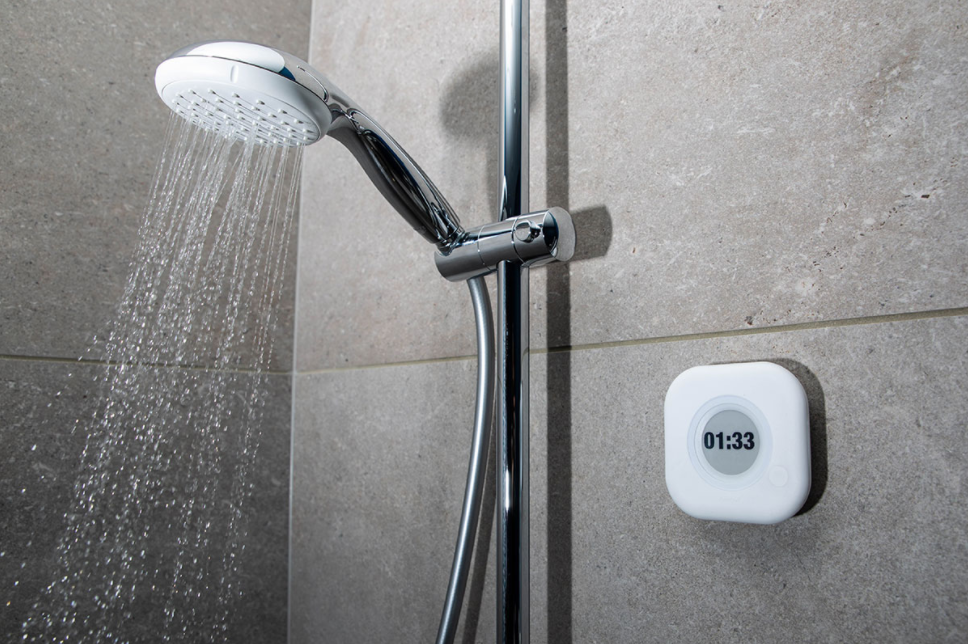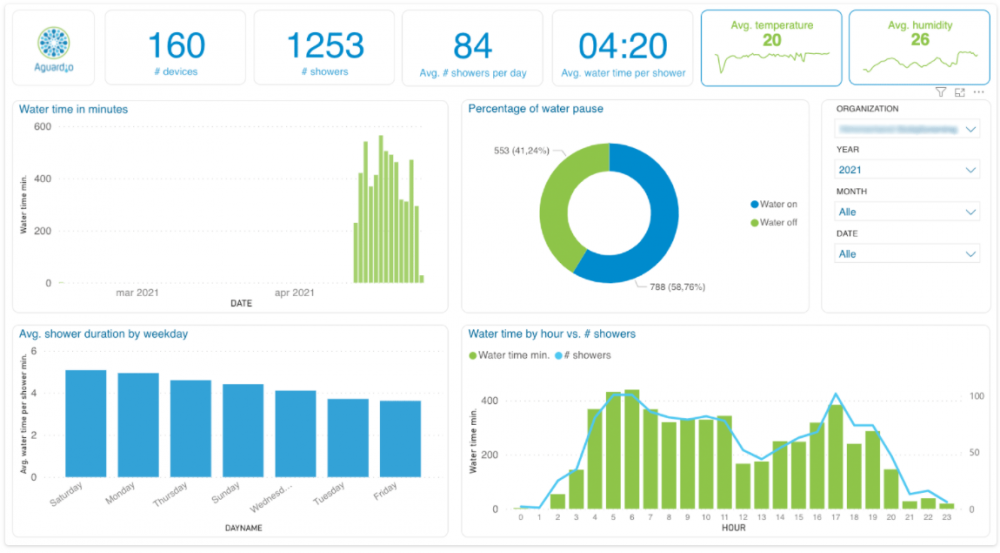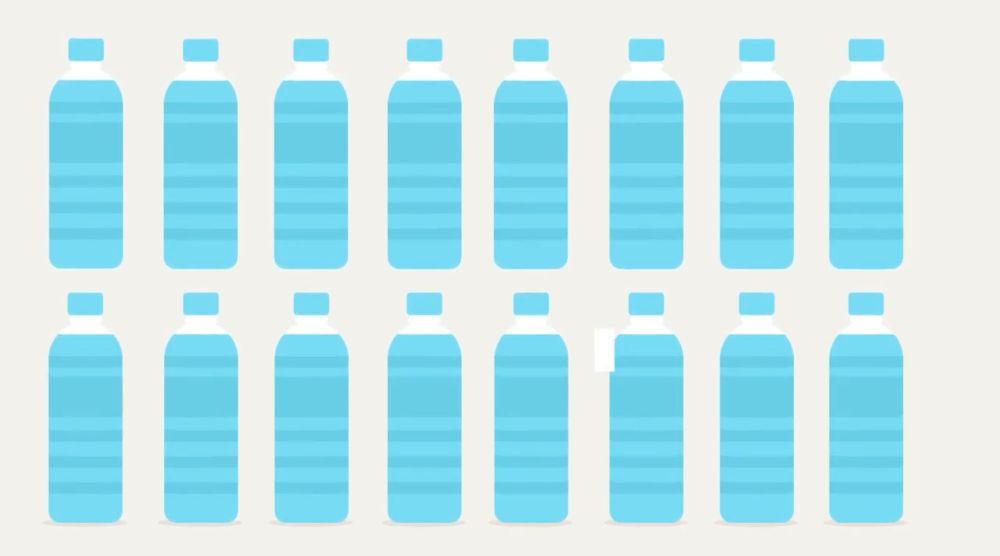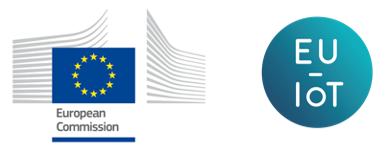
HOPU
ID: 3491
6. september 2021
Smart urban development and improved liveability through data-driven environmental monitoring.
ID: 3967
16. marts 2022
Aguardio is a Danish start-up dedicated to developing IoT solutions that guide people to a more sustainable way of living. Installed in the bathroom, the solutions facilitate behavioural changes with the intention to reduce water and energy consumption.
The company was founded in 2017, in response to the severe pressure on global freshwater availability, exacerbating alongside the ongoing climate crisis. As of today, the company consists of four full-time employees and three part-time employees.
Aguardio’s solutions are physical plug-and-play devices that rely on IoT technology in combination with complementary data-driven services. The portfolio contains two products with the same mission to reduce water consumption by supporting, improving and developing sustainable behaviour: The Aguardio G2, which is an interactive device deployed in the shower, and the Aguardio leakage sensor, which is a monitoring device deployed in the toilet. Aguardio G2 is the signature product of the company and therefore the focus of this case study. The little device guides people towards sustainable behaviour in the shower by creating behavioural awareness and discretely pointing the user in the right direction towards taking shorter showers. The device simply nudges people towards more sustainably conscious decisions, leading to savings in water, energy, carbon emissions and money.
“That is where the change starts. It is all about the awareness.”
Thomas Munch-Larsen, CEO and Co-founder at Aguardio
Aguardio serves the needs of a variety of customers on the B2B market, where water utilities, hotels, housing associations and student accommodations constitute the primary segments.

The incentive of Aguardio to develop their IoT solution derives from a desire to address the global challenge of water scarcity. It is a known fact that water resources are under pressure from climate changes and population growth, and in many parts of the world, water availability is predicted to decrease while demand is expected to rise. The water sector recognises that an extensive behaviour change of the population is required to reduce the overall water demand of the planet. If no action on demand management is taken, it is a matter of time before our planet will be in water deficit.
“Water scarcity will be intensified, unfortunately… Future wars will be about water.”
Thomas Munch-Larsen, CEO and Co-founder at Aguardio
Aguardio seeks to nudge people towards a more sustainable behaviour, and, with their IoT solution, help users to make a conscious choice to reduce water and energy consumption.
The idea was born in the shower by Aguardio Founder and CEO Thomas Munch-Larsen. Based on an aspiration to reduce his own water and energy expenses, while also making a positive contribution to the climate, he figured that the daily shower would be a good place to start. Realising that showers represent the most prevalent source of hot water consumption in a household, the business idea started transpiring. Working for more than 15 years in the energy sector, Thomas had seen many solutions, but only with an ability to monitor consumption and communicate historical data in kilowatt-hours or CO2 emission which – from a user perspective – is difficult to understand and act upon. In order to create a solution that motivates and enables behavioural change in the shower, it should engage the user and call for action by displaying real-time data.
“The data we collect is data related to behaviour, and by knowing your behaviour, you can create the interventions that lead to a more sustainable behaviour.”
Thomas Munch-Larsen, CEO and Co-founder at Aguardio

The initial version of the solution was developed to operate based on Wi-Fi. Although the solution was launched successfully, Aguardio soon discovered the difficulties of configuring devices using wireless network technology and also the challenge that it was extremely battery consuming. Based on the many insights gained during the first few years in the market, both on the technology and on how the user interacts with the device, Aguardio chose to shift the technology of the solution, creating an even more simplified version – Aguardio G2 – which was commercialised in 2019. By building connectivity into the device itself, Aguardio explicates that the technology of the solution basically reflects a mobile phone for the shower cubicle. With this, the Aguardio G2 is a complete plug-and-play solution with which the user can easily engage and from which it is easy to get access to data.
“That is where we differentiate from other solutions who call themselves IoT. We take it very literally. Our take on IoT is that it has to be plug-and-play and simple to use.”
Thomas Munch-Larsen, CEO and Co-founder at Aguardio
As of 2021, more than 5,000 Aguardio G2 have been produced and distributed to customers, digitising bathrooms mainly in the UK, but also in France and Denmark. Aguardio is focusing solely on the B2B segment since, as Founder and CEO Thomas Munch-Larsen reasons, it is in all fairness easier to sell to one person who has 200 bathrooms than 200 persons who have one bathroom.
Aguardio’s IoT solution provides real-time feedback that fosters awareness and nudges users towards behavioural change in the shower. The distinctive trait, nudging, is a unique interaction between solution and user that offers a non-intrusive way to encourage reducing time spent in the shower. The user can then choose to act on the feedback and awareness, or not. Hence, Aguardio will never be providing behavioural instructions, e.g. on the “correct” shower time length, as this is considered an individual matter. The purpose of the solution is only to foster awareness and leave any decisions about behavioural changes to the user.
“We know from studies that we as individuals do not like to be told what is right and what is wrong – that may create an opposite effect. So we are very aware that we should never be the ones raising a warning finger.”
Thomas Munch-Larsen, CEO and Co-founder at Aguardio
The Aguardio G2 is installed in the shower cubicle using double adhesive tape. The device runs independently of water and energy installations, and when attached to the enclosed bracket, a small magnet activates online functionality. The physical components of the solution consist of the G2 device itself and a bracket for installation. Four embedded sensors enable the device to identify when a person is taking a shower, based on detection of movement, humidity, temperature and sound. When the device detects that a shower is being started, the display turns on to show a clock, making the user aware of the shower time length. Embedded in the G2 device is a SIM card that facilitates connection to the cloud via both the LTE-M[1] and Narrowband IoT[2] networks.

After an ended shower, the display changes and shows a uniquely generated QR code. By scanning the QR code, a ‘MyAguardio.com’ browser application enables the user to gain access to data on the current shower, for example in terms of water and energy consumption and carbon emission. The application provides historical shower data and summaries on a daily, weekly and monthly basis while offering benchmark data for the user to compare with the shower behaviour of peers. Finally, the application provides data on ambient indoor climate and thereby detects if a bathroom is at risk of developing mould.
When several G2 devices constitute a collective deployment, e.g. in a hotel or housing association, the owner of the devices can access the total mass of collected data via a browser on a desktop or mobile device. This access offers aggregated information on the users’ shower behaviour and provides statistical insights on, for example, average shower time and temperature, as well as peak times of demand for hot water – insights that can be used to optimize energy installations in the building.

Aguardio is currently running pilots on increasing user engagement further by introducing elements of gamification in the solution. The purpose of gamifying shower behaviour is to motivate the users to scan the QR code to further increase awareness and to provide incentives to take shorter showers. The gamification act may simply be a small note on the display of the device stating: “Did you know that the average shower time in this hotel is five minutes?” or “Did you know that the energy spent during one minute in the shower could run a 60 watt light bulb for 6 hours?”. This information alone creates an awareness that may lead users to take shorter showers. Another act of gamification may be rewards, for example by letting the user earn points when taking showers in less than 5 minutes or when reducing average shower time. These points could then be converted into something of value for the user, e.g. a free coffee at the university for the student in a residence hall or a discount at a gourmet restaurant for the guest in a hotel.
“We are trying to gamify. We are trying to motivate people in a predictable direction, not forcing them.”
Thomas Munch-Larsen, CEO and Co-founder at Aguardio
Aguardio once again stresses that the choice behind the behavioural change should always be up to the user, but that the elements of gamification create some incentive sentiment that goes beyond the usual financial motive.
The development of Aguardio’s IoT solution is a contribution to the call for preventive action that addresses the global challenge of water scarcity. Consumer awareness and nudged behavioural change will help drive sustainable demand reductions that allow civilisations to adeptly manage the water resources of the planet. Shorter showers mean less water and energy consumption, which leads to reduced water and energy bills and more sustainably responsible behaviour.
“That is how you should see Aguardio: digitalising the bathroom with the vision of creating interventions that lead to sustainable behaviour.”
Thomas Munch-Larsen, CEO and Co-founder at Aguardio
Although the reduced shower time of one individual may seem an insignificant effort for the global water scarcity challenge, it is the first necessary step towards creating collective impactful results. Reducing shower time by just one minute saves more than 10 litres of hot water, while greatly decreasing the CO2 emission and wastewater emission of that individual. Hence, imagine if all 7.9 billion people on the planet would reduce their shower time by just one minute…
The outcome of having the Aguardio solution installed has in fact been tested by scientists, and results of the studies show that shower behaviour does indeed change. The most extensive study conducted measured 25,488 showers in hotels across Denmark, Spain, the UK and the US. The analyses showed that when real-time feedback was provided, shower duration was shortened by 13.56%, and when gamification in terms of persuasive messages was added, a 21.27% reduction was achieved. The findings represent savings of approximately US$48, 4.44 m3 of water, 0.19 MWh of energy and 33 kg of CO2 per shower/year.
For users of the solution, the direct outcome is an increased environmental awareness and incentive to undertake sustainable behaviour. The solution essentially makes it simple and convenient for users to shower smarter and save water, energy and money. For customers of the solution, the direct outcomes are manifold:

There are two governing drivers of the demand for Aguardio’s solution now and in the future: water scarcity and fluctuating energy prices, leading to higher costs for taking a shower. These drivers emphasise the main advantageous outcomes of adopting the solution as well.
Both customers and users are attracted by the simplicity of the Aguardio device and its ability to make the users engage with their shower time. The attribute of the solution being plug-and-play, and independent of water, energy and Wi-Fi, enables installation within minutes and eliminates the need to involve a plumber or an electrician. Yet another advantage is the short payback period of the device, making it a candid tool to foster pro-environmental shower behaviour that can contribute to customers’ environmental, social and corporate governance.
Use cases show that users reduce shower time by roughly two minutes and that residences can expect up to 20% savings in shower water and energy, as a result of installing Aguardio. This is achieved by simply increasing consumer awareness and engagement, making it an excellent solution to reduce resource usage and increase environmental awareness.

Since Aguardio introduced the idea of an IoT device that creates awareness in the shower and nudges sustainable behaviour, several technological iterations have passed and many valuable learning outcomes have transpired.
One significant learning outcome relates to the importance of having a well thought out market penetration strategy. Being founded in Denmark, it would seem natural for Aguardio to launch the solution in the Nordic countries. However, a strategic focus made the company look elsewhere:
“We are focusing on: where is the pain? Take the UK as an example, the pain that they are facing is a risk of water scarcity.”
Thomas Munch-Larsen, CEO and Co-founder at Aguardio
Realising that in the Nordic countries, where water resources are not yet a discernible problem, Aguardio’s offering would be a nice-to-have solution that appeals to a sustainability desire and financial incentive. Whereas in the UK, where the problem is more pronounced and widely recognised, it is a need-to-have solution, also underpinned by use cases that demonstrate the ability of the Aguardio G2 to reduce average shower time by 30%. Furthermore, the UK is a market with high purchasing power located relatively close to Denmark, and for Aguardio having reference use cases in the UK provides a strong appeal to international market players. Therefore, the UK is a strategically selected market for penetration and a stepping stone for the globalization of the Aguardio solution.
Aguardio considers a number of points to be vital for the success of their IoT solution so far. Taking departure in the journey of development and commercialisation, these points are compiled into a list of recommendations below:
1. Remember and sustain passion
“You need to ask yourself, why are we doing this? What is the purpose?”
Thomas Munch-Larsen, CEO and Co-founder at Aguardio
For Aguardio, the answer to this is a desire to create solutions that help future generations to use less water and energy. The underlying passion of the company provides the ability to overcome challenges along the way. Remembering and sustaining this passion among the people working in the company foster determination and boldness, which, according to Aguardio, is the essence of how the company has reached the point at which they are today.
2. Develop solutions from a user perspective
Aguardio recommends IoT innovators to prioritise spending time listening to the users and exploring their interactions with the proposed solution rather than merely developing it from an engineering point of view.
“Really focus on bringing value to the user. Focus on the use cases.”
Thomas Munch-Larsen, CEO and Co-founder at Aguardio
3. Team up with the best partners
Staying true to one’s core competencies, while orchestrating all business activities alone, is simply impossible. Delegate to partners, and select the few most trusted and best performing to be your allies.
“Focus on your own values and your own core competencies. And then in the area where you are weak, team up with the best partners.”
Thomas Munch-Larsen, CEO and Co-founder at Aguardio
4. Fail fast with reality-checks
“Come out of your office and fail fast.”
Thomas Munch-Larsen, CEO and Co-founder at Aguardio
Aguardio argues that no matter how many hours one may spend developing a solution, its meeting with reality sets completely new requirements. Therefore, the sooner developers can test their solution with pilot customers the better, as it allows them to fail fast, leading to fast learning and improvement. Essentially, the reality cannot be predicted from an office desk.
Finally, Aguardio points to the act of profound realism and objective action as a foundation for success. In IoT, one must not stick to individual ideas, but be receptive to the voice of the market.
“Kill your darlings for God’s sake!”
Thomas Munch-Larsen, CEO and Co-founder at Aguardio
Aguardio has also developed a leak sensor with the main function to detect leaking toilets.
Water leakage in toilets is a problem that can be difficult to detect, as the water trickles down the inner backside of the toilet pan. It does, however, become noticeable when the water bill arrives, as it is a problem that can cost up to €3,800 per toilet each year. A Danish housing association was experiencing this challenge and reached out to Aguardio, asking for a solution to automate detection and reduce the related costs. This request initiated the development of Aguardio’s leak sensor.
Running water is colder than the ambient temperature, and the sensor therefore measures temperature variances to identify leakages. In addition to detecting leakages, the device also provides insight into how often a toilet is being flushed. The leak sensor works as a stand-alone unit but is also compatible with the Aguardio G2 solution or a separate Bluetooth gateway. As a stand-alone unit, the leak sensor will make a sound alert when it detects a leak, and when paired with an Aguardio G2 or a gateway, it will send the alert via notification.
Leaking toilets are a prevalent challenge that many households are not even aware of. With around 5-8% of toilets leaking (in the UK), it ends up costly not only for households but also for the environment and the scarcity of water resources.
“That leakage is equivalent to wasting water that could supply a population of 2.8 million people per day. So there is a huge market.”
Thomas Munch-Larsen, CEO and Co-founder at Aguardio
The Aguardio leak sensor is applicable for several use cases. For private housing associations and households, the device offers the tenant the opportunity to immediately redeem leakage by calling the building owner or taking action himself. For public and private facilities, e.g. at a school, conference centre, hotel etc., where numerous sensors may be installed, the device offers the facility manager the opportunity to receive specific notifications such as ‘the toilet in booth X is leaking’, indicating where to take action.
By detecting leaking toilets and creating awareness on the amount of (redundant) flushes, Aguardio’s leak sensor has significant potential to facilitate a reduction in toilet-related water consumption and especially the emission to the wastewater system. The high costs related to this challenge provide both a financial and environmental incentive to invest in the leak sensor.


Aguardio assumes a high level of digital maturity with an overall score of 4.38. The score indicates that the digital capabilities of the company are vastly mature, and that they perform above average for the sector.
The Digital Maturity Assessment Tool is copyrighted by Associate Professor and PhD Annabeth Aagaard, Director at the Interdisciplinary Centre for Digital Business Development, Aarhus University. To get the digital maturity of your company mapped out, click here.
[1] LTE-M (Long Term Evolution for Machines): low power wide area (LPWA) technology standard suitable for IoT. It is a broadly used 4G standard.
[2] Narrowband IoT: standards-based low power wide area (LPWA) technology developed to enable a wide range of new IoT devices and services. It is a part of the upcoming 5G standard.

Copyright notice: © 2020 – 2023 EU-IoT Consortium.
This material was produced as part of the EU-IoT project, grant ID 956671, and is funded by the Horizon 2020 Framework Programme under topic ID ICT-56-2020.
EU-IoT is the European IoT Hub. The EU-IoT project works towards growing a sustainable and comprehensive ecosystem for Next Generation Internet of Things.
Source of origin: Information to document this use case originates from a network collaboration w. the Nordic IoT Center (IoT community supported by the Danish ministry for higher education and science); Case period: 2021-2022.
